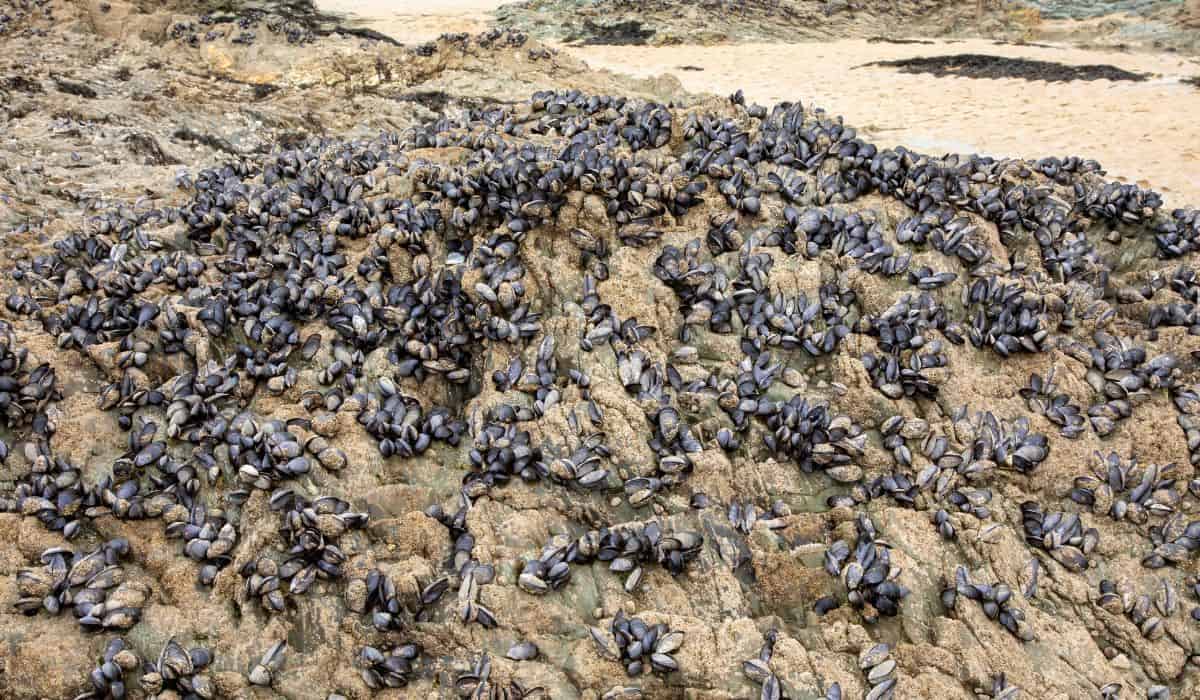Yes, you can forage and eat mussels from the beach. Mussel foraging is a fun, adventure-filled activity that also adds protein to your diet sustainably.
That said, there are some risks involved in eating mussels foraged from the beach. Therefore, it’s critical to know and take the necessary safety precautions.
Why Is Eating Wild Mussels Dangerous?
Eating wild mussels exposes you to a variety of risks, namely:
- Shellfish poisoning
- Bacteria such as E. Coli
- Viruses such as the Norovirus (Winter vomiting virus)
- Parasites such as Cryptosporidium parvum
- Chemical and heavy metal contamination
- Allergies
Of all the risks above, shellfish poisoning is the most dangerous. This is because it can cause paralysis, amnesia, and even death.
Shellfish poisoning from mussels is a result of algal bloom in the water.
Mussels feed by filtering nutrients from the seawater; therefore, they accumulate the toxins in case of algal bloom.
With that in mind, one may wonder if it’s safe to eat the mussels.
Well, it’s safe to forage and eat mussels from the beach if you take these precautions.
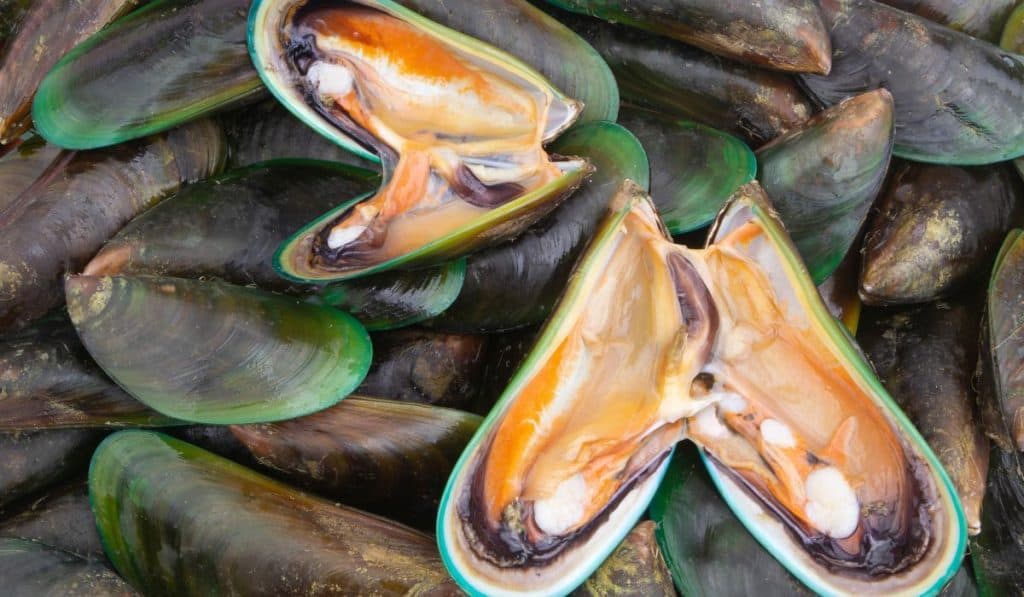
Precautions to Take When Foraging Mussels
Know When to Forage
There’s an old saying that you should only forage mussels in the months ending with ‘R’, but it’s false.
Different areas are safe at varying months of the year depending on when the warm currents end.
Hence, you need to confirm when it’s safe to forage in your area.
For example, in California, you can only go foraging for mussels from the beach from November to April.
Consider the Water Quality
You need to ensure that you get your mussels from unpolluted water.
Here’s what to look out for in that regard:
- Stay away from harbours, marinas or places with high boat traffic
- Check for any drainage outflows from mines, industries or towns
- Don’t go foraging after heavy rains, as contaminants may have been washed to the shore
If you’re still not sure about the water quality, check these sources:
Get the Timing Right
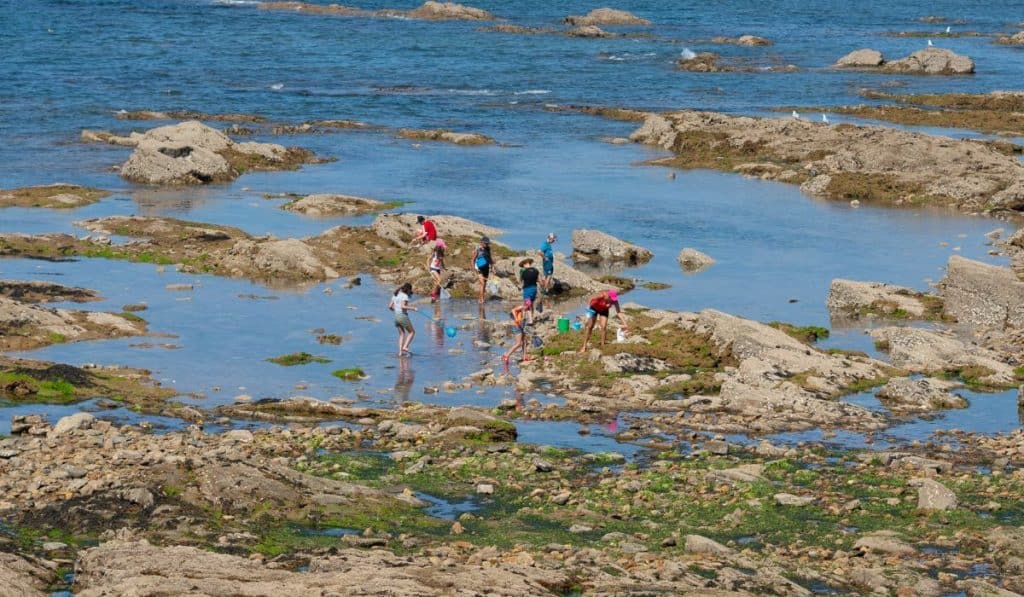
The best time for mussel foraging is when there’s a low tide. The lower the tide, the larger the mussels you will find.
Apart from the low tide times, it’s also critical to determine the tide patterns, so a flooding tide doesn’t cut you off.
You can get a tide chart from the area or ask the locals to be safe.
Make Sure You Pick Live Ones
You might find a ton of mussels on the beach, but not all are safe for consumption.
Dead mussels are not good to eat, and you will recognize them because they are open.
Mussels should only open when cooked. So if you find an open one, discard it.
Take the Right Amount
Now, you might find many mussels but only pick what you need.
There’s a limit to how much you can carry in some areas, so ask about any such regulations.
In addition, pick from several spots to avoid depleting one area. Besides, this allows you to explore the beach.
Avoid the Small Ones
It’s best to avoid picking small mussels as they still need time to grow and breed. This sustains the population.
Even more, the larger mussels are tastier and tend to be more tender.
Tools Needed For Foraging Mussels
Here’s what you need to have:
- Thick gloves. Mussels can be sharp and may injure your hand. A good set of gloves keeps you safe.
- A bucket to put your mussels in. A waterproof bag also works fine.
- Appropriate footwear. You will find the mussels in rocky areas that have weeds, so there’s the risk of slipping. Wear shoes that have a good grip so you don’t fall.
- Additional gathering tools. Depending on your area, you might be allowed to gather mussels with tools other than your hand. This includes knives, crowbars, or trowels. While they are not mostly needed, if you must use them, first confirm if it’s allowed.
- Fishing license. This requirement also depends on the area regulations. Before going foraging, confirm whether you need a permit on that beach. In some States, the lack of a license may cost you a hefty fine.
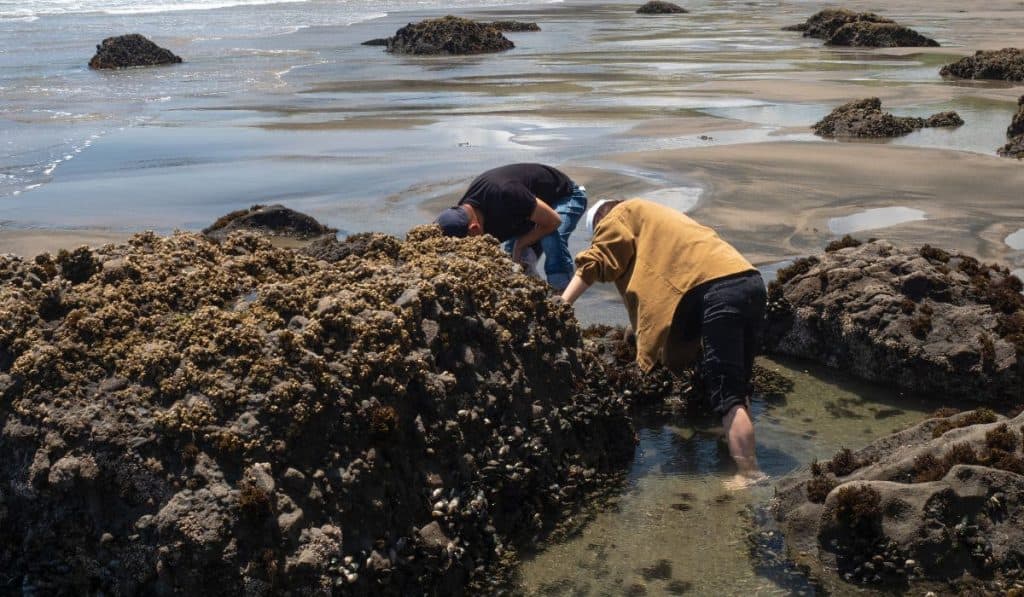
How to Store Your Mussels
Once you have picked enough mussels, cover them with some seaweed. The seaweed helps them stay fresh.
If you don’t want to cook the mussels immediately, you can keep them in the refrigerator.
Put them in a plastic bag or wrap them in a cloth. Store them together with the seaweed.
This gives you an allowance of up to two days.
How to Clean Your Mussels
You must clean the mussels before cooking to remove all the dirt picked up.
The first step is to trim the beard. You do this by pulling it off towards the narrow end, using your hand.
Then, remove any barnacles that may be on the surface. Easily scrape them off with a knife, ensuring that you don’t damage the shell.
After that, you should scrub the mussels in clean water to remove any extra dirt such as sand and seaweed.
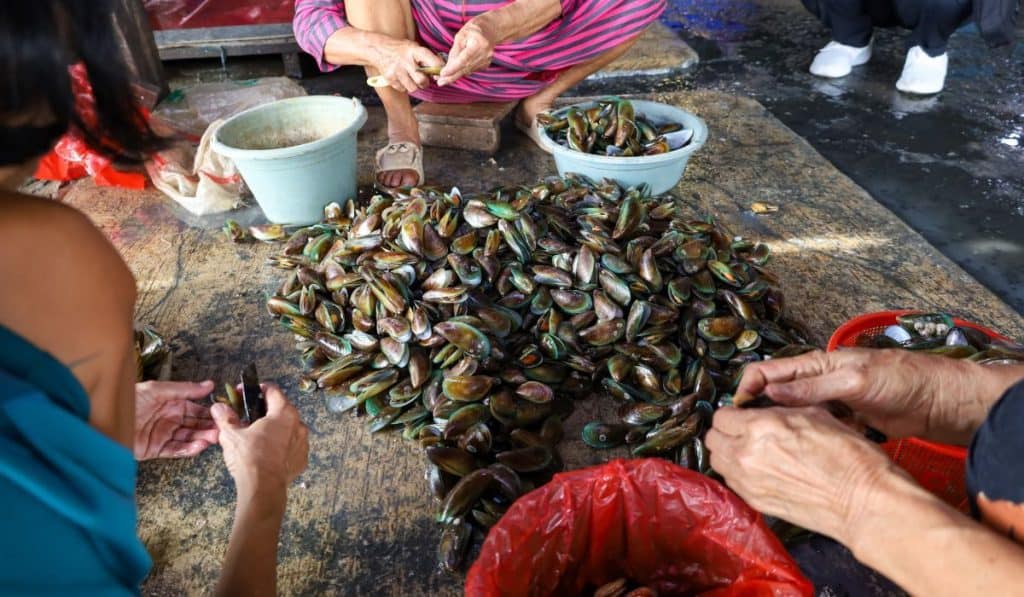
Lastly, soak the mussels in freshwater to purge any impurities. After soaking, the impurities are left at the bottom, and you can then pull the mussels out of the water.
PS: If the mussels are left in freshwater for extended periods, they can die.
Therefore, if you intend to soak them for longer periods, you should add some sea salt to the water.
How to Cook the Mussels
Quickly cook your mussels by steaming them until they open up. Once they are open, then they have cooked.
However, there are many recipes out there that add even more flavor to the already delicious mussels.
Before cooking, check the mussels one last time. If there’s any that got damaged during cleaning, don’t cook them.
Conclusion
As you’ve seen, it’s possible to forage and eat mussels from the beach.
Nonetheless, you need to keep the risks in mind and take all the necessary precautions.
Ensure that you get all the essential information regarding your specific area. Comply with the regulations, and you will be fine.
Enjoy the foraging, and the delicious meal after that!

